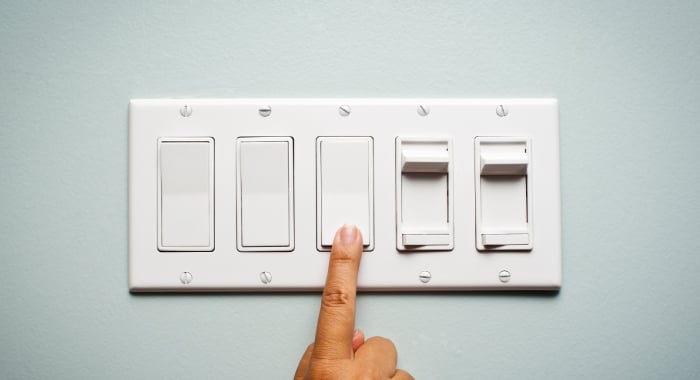With a new year just around the corner, many people are putting some serious thought into their New Year’s Resolutions. If you’re planning to make a resolution about reducing your carbon footprint, why not get a head start by resolving to save energy at home – beginning right now?
Saving energy is great for the environment, and it’s a great way to help you and your family save money. With winter weather causing many households to use up more energy on heating, cooking and lights, this is a great time of the year to address your energy usage and see where you can save.
Small Change, Big Impact
By making just a few small changes to save energy around your house, you can make a big impact – on your household finances, and on the world at large. Every reduction in energy consumption means less strain on public infrastructure and less need to build new power plants. When everyone consumes less energy, it minimizes power outages and helps keep down costs for all. On a larger scale, it’s been estimated that 20 percent of US emissions are directly related to household energy consumption and around 80 percent are indirectly linked – so the changes you make at home can help to make a huge impact on global warming as a whole.
Of course, saving yourself money is another great reason to reduce your energy consumption. Families in the US are spending an average of $2,060 per year on home utility bills, which include heating and cooling, electricity and gas, as well as water and other utilities. Energy usage may be even higher – and more expensive – depending on the size and energy efficiency of your home and your appliances.
Climate Control Inside the Home
Heating and cooling usually have the biggest impact on your household energy footprint. With the chilly days of winter well upon us, you can start your energy-reduction campaign by looking at how to lower your heating usage. Sometimes, simple changes can make a noticeable difference – like ensuring doors and windows remain closed while the heating is on, raising window blinds during the day to bring in the sun’s natural warmth, and moving furniture away from vents so that your system isn’t spending more energy than necessary to circulate heated air around the house.
Maintenance is another important aspect of energy-efficient climate control inside the home. Your heating vendor might already offer regular tune-ups, so check in and see what’s available. It’s also a good idea to consider updating your system to a more energy-efficient model, if you’ve been using the same heating equipment for some time. New models can save around 30 percent on costs in the long-run, improve your at-home comfort, and reduce the impact your household makes on the climate.
More Efficient Lighting
You can start the journey to reduce your lighting-related energy spend is to replace outdated bulbs with ENERGY STAR® certified lights, which are independently assessed and proven to save energy and help protect the environment. In fact, ENERGY STAR® lights can use up to 90 percent less electricity than older bulbs – a significant and unnecessary output of energy.
Another “bright” idea to make your monthly energy budget go further is to install dimmer switches, even though this could mean an up-front investment to replace existing fixtures. Dimmer switches have the dual benefit of not only saving energy, but also making it easier to adjust the mood in a room.
Finally, don’t forget to switch off the lights when you leave a room!
Household Water Reduction
Water accounts for a significant portion of most households’ energy bill, amounting to around $70 per month. What’s more, the energy to heat water will also affect how much you’re paying for electricity. The first step to saving water is simply making a conscious effort to use less – whether that means only running the dishwasher when the machine is full, doing fewer but larger loads of laundry, or setting a timer to encourage the family to take shorter showers.
Replacing older fixtures with water-saving faucets and low-flow showerheads is another great way to automatically reduce how much water you’re using. It’s also important to look for leaks, as even a small drip can lead to multiple gallons of water being wasted and unnecessary energy – and money – being expended.
Being Conscientious About Electronics and Appliances
With so many hand-held devices in our lives, it’s easy to forget how much energy these small devices actually use up while plugged in or charging. The next time you need a power strip, choose a smart power strip that lets you control the flow of energy. Unplug electronics when they’re not being used and don’t leave chargers plugged in if they’re not actively charging a device, as they are still drawing energy while plugged in.
In terms of larger appliances, the biggest impact you can make is to buy an energy-effect model when replacing your white goods. Other small changes can also help to reduce energy consumption, such as setting your refrigerator to 38°F, using a toaster over rather than the full-sized oven for small baking tasks, and limiting the time family members spend opening and closing the fridge.
Making Energy Savings a Priority
Ultimately, you have the power to transform your energy usage, your spending, and your impact on the environment. Just a few small changes can make a world of difference!
MassSaves offers rebates and free energy assessments to help you reduce your energy expenses. Learn more at https://www.masssave.com/
.png?width=258&height=68&name=Harvard_Primary_Logo_Horiz_RGB%20(2).png)




